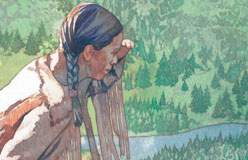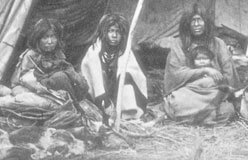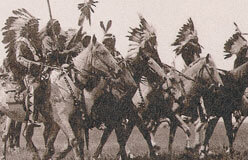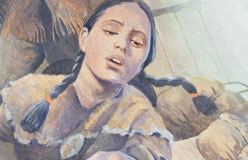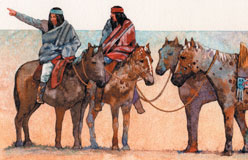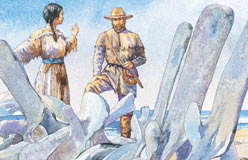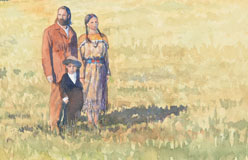By the fall of 1804, Sacagawea was expecting her first child. But Charbonneau was a wanderer by nature. He asked Lewis and Clark if they would hire him as a translator.
He knew Hidatsa and the sign language used by the river tribes. Lewis and Clark hired him right away. When they found out he was married to a Shoshone, they asked him to bring her along. They had heard that the Shoshone had fine horses, which they would need later. They thought that seeing Sacagawea with them would make the Shoshone more willing to trade. They also believed that any Indians they met would view them as peaceful. This was because war parties never included women.
